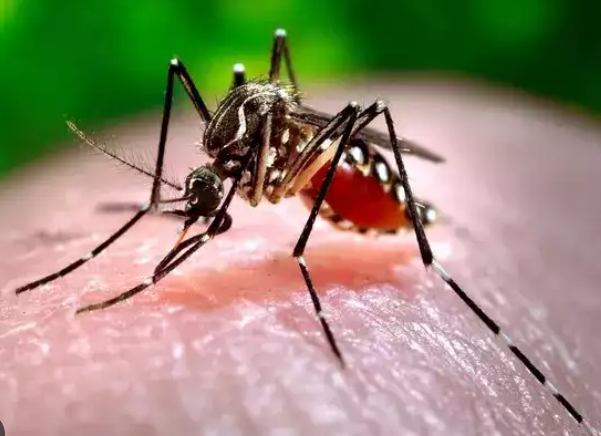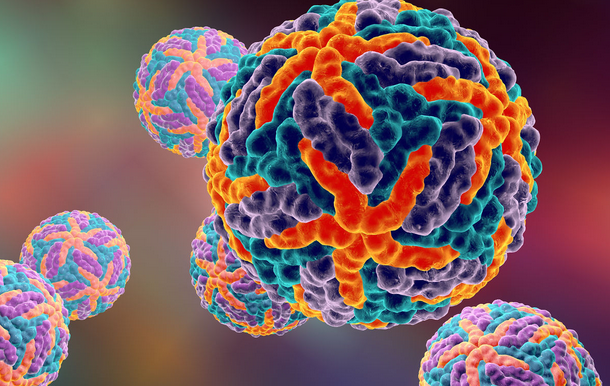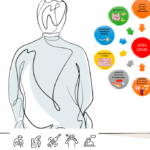Global Dengue Surge: Understanding the 2024 Outbreak Crisis
When the Covid-19 outbreak seems to have receded, dengue has engulfed the world like never before. According to the figures revealed by WHO, in 2024 alone, the world has seen more than 7.6 million cases of dengue and this includes more than 16,000 severe cases and over 3,000 deaths. What is so depressing about this outbreak is that almost all continents on the earth, including the ones that were reporting fewer figures in the previous years, are now reporting a significant increase in the transmission of this disease.
According to the WHO estimate, more than 90 countries have already reported the outbreak of dengue. With the deadly virus continuing to spread and posing a serious challenge to the already overloaded healthcare systems worldwide, there has been a need for urgent attention and well-coordinated action. One effective way of developing effective strategies for negating the effects of dengue is to understand the dynamics of this outbreak.
The Scale of the 2024 Dengue Outbreak
A global health crisis appears to have hit mankind hard in 2024 with the dengue outbreak reaching unprecedented levels. The scale of transmission of this disease has been such that multiple continents have been affected. This sudden surge has truly challenged the healthcare systems worldwide in recent years.
Western countries have especially been hit hard with dengue, with a majority of countries witnessing a surge in cases. According to an estimate, already 7 million cases have been reported in the Americas by the end of April 2024, surpassing last year’s high of 4.6 million cases. While the Americas have been reeling from the onslaught of the deadly disease, Asian countries have also witnessed unprecedented levels of dengue cases in 2024 and are contributing significantly to the global case count and fatality rates. These widespread impacts indicate the level of severity of dengue across different geographical areas in the world.
Understanding Dengue Fever
The dengue virus, which typically infects humans through mosquito bites, is what causes dengue fever. While Aedes aegypti mosquitoes are the primary carriers, Aedes albopictus mosquitoes also play a supporting role in some regions. These mosquitoes which are usually found in tropical and subtropical climates, thrive in urban and semi-urban areas where they breed in standing water containers near human habitations.
Dengue infection symptoms can vary a lot in terms of severity. However, a majority of dengue cases are asymptomatic or result in mild illness. Some of the most common symptoms of dengue include:
- Severe headache
- High fever (40ºC or above)
- Muscle and joint pains
- Pain behind the eyes
- Swollen glands
- Nausea
- Rash
- Vomiting
Most of the symptoms that a patient experiences will be 4-10 days after infection and will usually last for about 2-7 days.
However, in some rare cases, mild dengue can progress to a more serious condition that can potentially threaten one’s life. Severe dengue cases are usually accompanied by:
- Fluid accumulation
- Plasma leaking
- Severe bleeding
- Respiratory distress
- Organ impairment
Some of the major warning signs of severe dengue cases are:
- Persistent vomiting
- Blood in vomit or stool
- Bleeding in the nose or gums
- Rapid breathing
- Restlessness
- Severe abdominal pain
- Fatigue
A lot of factors contribute to the chances of getting severe dengue. One important factor is a second infection with another virus serotype. When an individual is infected with a particular serotype, he/she gets lifelong immunity against that particular virus. However, the immunity gained this way doesn’t come to the rescue when the individual is up against another serotype. Being infected the second time with a different serotype may result in carrying a higher risk of severe disease.
The groups that are at higher risk of contracting severe dengue include adults over 65 years of age, pregnant women, and infants. The presence of mosquito breeding sites near human habitation also contributes to an increased risk of contracting infection and spreading to others. Everyone needs to understand different aspects of dengue to effectively detect, manage, and treat the condition.
Factors Contributing to the 2024 Surge
The devastating scale of the 2024 dengue outbreak can be attributed to several factors. For example, periodic weather phenomena and climate change have contributed immensely to this outbreak and its spread. Certain global events like La Nina and El Nino have led to increased humidity, heavy precipitation, and rising temperatures. All these have created an ideal condition for mosquito reproduction and transmission of the virus. These climatic changes have not only intensified the transmission rate in endemic areas but also extended the duration of dengue seasons.
Another factor that has fuelled the outbreak is rapid human movement and urbanization. The risk of contracting the disease is high when the mosquito breeding sites are close to human habitation. This is especially so in urban and semi-urban areas. In addition to this, the transportation of goods and movement of infected individuals who potentially carry mosquito vectors also enhance the chances of spreading dengue.
Also, whenever there are changes in the circulating dengue serotypes, they contribute to the severity of dengue outbreaks. These newer virus serotypes break through the immunity developed by people even in communities that have already immunity against an earlier serotype. The increasing abundance of mosquito vectors, like Aedes aegypti and Aedes albopictus and the changing distribution, have also contributed to the transmission in less infected areas.
The financial and political instability in several countries has also impacted the healthcare system, further compounding the crisis. All these challenges have somewhat hampered the ability to implement vector control measures, robust surveillance, and timely interventions.
Diagnosis and Treatment
To effectively manage dengue, following a timely and accurate diagnosis is the key. As a preventive measure, healthcare providers should consider checking dengue in patients who have been in areas where the disease has been prevalent. However, there are certain diagnostic challenges due to similarities with in symptoms with other illnesses.
As of now, there is no specific treatment for dengue. Therefore, doctors focus more on managing symptoms and providing supportive care. In mild cases, patients are administered pain relief medications; with acetaminophen being the primary choice. Certain non-steroidal anti-inflammatory drugs like aspirin and ibuprofen are not recommended as there are chances of increased bleeding.
If governments across the world are to reduce mortality rates, then they need to focus more on early detection and providing appropriate healthcare. Quickly identifying the warning signs of acute dengue fever, like persistent vomiting, bleeding, or severe abdominal pain is the key. When such severe cases are timely referred to tertiary healthcare facilities can greatly improve outcomes.
Hospitalization is often required in case of severe dengue cases. Here, the treatment will largely focus on maintaining the fluid volume of patients. This step is necessary for effectively managing the plasma leakage as it is a common characteristic in severe dengue cases.
Prevention and Control Strategies
To effectively prevent and control dengue outbreaks, it is important to rely on vector control interventions. Why is this important? These measures are adept at identifying areas that are at high risk of human-vector contact, like workplaces, residences, hospitals, and schools. Some of the proven control strategies that can be adopted in this regard include preventing mosquitoes from having access to habitats that are favourable to laying eggs through environmental management and modification, regular cleaning of domestic waste water containers, and proper disposal of solid waste.
Another effective way of preventing dengue transmission is by employing personal protection methods, like wearing long-sleeved shirts and pants, treating clothing with insecticides, and using topical repellents on exposed skin. There are some indoor protection methods one can employ to control the spread of dengue fever, like using household insecticide aerosol products and mosquito coils during the day, using insecticide-treated nets while sleeping, and installing window and door screens.
Even at the community level, some steps can be taken to effectively control the spread of dengue. This includes educating communities about mosquito breeding prevention, like applying appropriate insecticides to outdoor water containers, cleaning water storage containers, covering and emptying containers regularly, etc.
Global Response and Healthcare Preparedness
The World Health Organization has been quick in issuing its recommendations in response to the sudden increase in dengue cases worldwide. In its recommendations, WHO has emphasized prompt case reporting and enhanced surveillance. Furthermore, the world health body has placed importance on early detection and appropriate clinical management to prevent the progression of the fever.
Across the world, efforts are being made to improve diagnostic capabilities and strengthen vector control measures. Even healthcare systems are adapting themselves by helping providers to be aware of the prevailing situation. Special attention is also being provided to high-risk groups, like adults over 65, pregnant women, and infants. Well-coordinated efforts are required to mitigate the impact of the ongoing dengue cases and improve the preparedness of everyone for tackling future challenges posed by dengue.
The Post Covid-19 Context
The Covid-19 pandemic, according to many experts, has vastly influenced the current dengue outbreak. Dengue infections, after the onslaught of the pandemic, have surged exponentially with the Americas alone having reported more than 4.6 million cases in 2023 alone. One possible explanation that can be given is the disruption of dengue surveillance and control measures during the pandemic, as healthcare systems and resources were overwhelmed.
The recently ended pandemic has also taught us some valuable lessons that can be applied to effectively manage the current dengue outbreak. A lot of importance is now being given to disease surveillance systems, global health cooperation, and rapid response mechanisms. Healthcare providers across the globe are now more vigilant than ever before to identify and report potential cases of dengue. The experience gained in recent years continues to help many countries tackle the surge in dengue cases, though the challenges keep coming on.
Tags: dengue outbreak, dengue fever, dengue cases in mexico, dengue cases filed in USA, dengue issues, dengue treatment, dengue coverage, dengue fever insurence,dengue precautions, dengue protection tips, dengue case sheet, dengue study
















